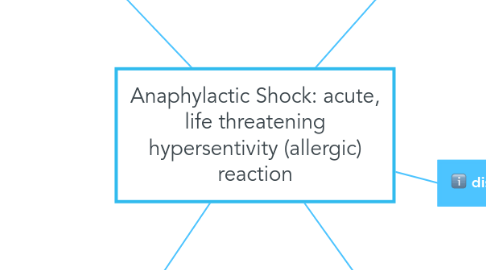Anaphylactic Shock: acute, life threatening hypersentivity (allergic) reaction
af Jordan Frantzen


1. Signs and symptoms
1.1. swelling of the conjuctiva
1.2. runny nose
1.3. swelling of lips, tongue, and /or throat, angioedema
1.4. CNS: lightheadedness, loss of consciouness, confusion, headache, anxiety, dizziness, sense of impending doom
1.5. Heart and vascular: fast or slow heart rate, low blood pressure, chest pain
1.6. respiratory: shortness of breath, wheezes or stridors, hoarseness, pain with swelling, cough
1.7. skin: hives, itchiness, flushing, pruritus, urticaria
1.8. pelvic pain
1.9. gastointesinal: cramping abdominal pain, diarrhea, vomitting
1.10. los of bladder control
2. Immunity
2.1. Active vs Passive Immunity
2.1.1. you make your won antibodies to fight the pathogen; long lasting
2.1.2. you gent antibodies from different organisms, you dont make your own; short lasting
2.2. active
2.2.1. naturally Acquired: immunity gained thrugh illness and recovery
2.2.2. artificilally acquired: immuntiy acquired through vaccinations
2.3. passive
2.3.1. naturally acquired: immunity acquired from antibodies passed in breatsmilk or through placema
2.3.2. artifically acquired: immunity gained through antibodies harvested from another pesron or an animal

